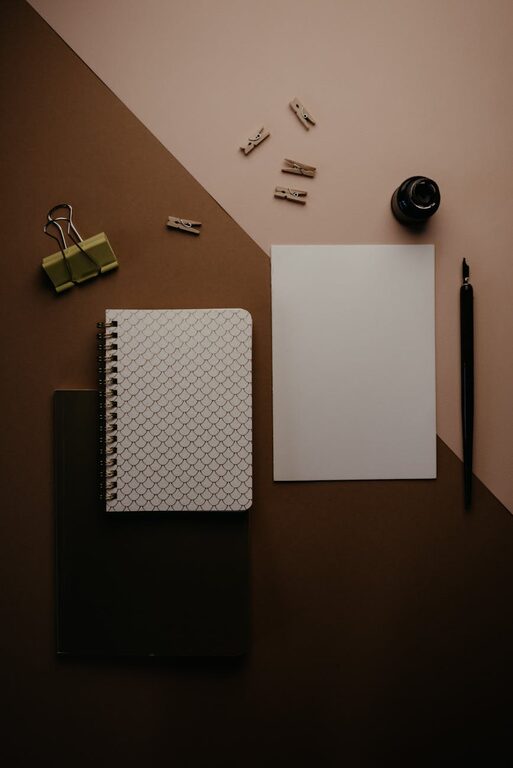
Bullet journaling has become a popular way to organize tasks, track habits, and express creativity—all in one notebook. If you’re new to this method and want a simple yet effective way to plan your days, a bullet journal could be just what you need. In this beginner guide, we’ll walk you through the essentials to get started with bullet journaling and make it a habit that fits your lifestyle.
What is Bullet Journaling?
Bullet journaling, often called the “BuJo” method, is a customizable planning system created by Ryder Carroll. It combines elements of a to-do list, diary, planner, and habit tracker into a single notebook, using simple symbols and bullet points. This method is flexible—you can tailor it to fit your needs, whether it’s for work, school, personal goals, or creative projects.
Why Start a Bullet Journal?
– Enhanced organization: Keep track of appointments, deadlines, and goals all in one place.
– Boosted productivity: Prioritize tasks and focus on what matters most daily.
– Creative expression: Customize layouts, use colors, doodle, and make your journal visually appealing.
– Mindfulness and reflection: Track habits, moods, and progress toward goals with purpose.
Materials You’ll Need
Before jumping in, gather a few supplies. The beauty of bullet journaling is that it requires minimal tools, so don’t worry about fancy gear.
– Notebook: Start with any notebook—dotted, grid, or blank pages work well. Popular choices include Leuchtturm1917 and Moleskine for their quality and dot grid layouts.
– Pen: A reliable pen that doesn’t bleed through pages. Gel pens, fineliners, or ballpoint pens are popular.
– Ruler (optional): For drawing straight lines and creating neat layouts.
– Colored pens or markers (optional): To add color coding or embellishments.
Getting Started: The Basic Elements
1. Index
At the beginning of your journal, reserve a few pages for the Index. This acts like a table of contents and helps you find collections, trackers, or logs fast. Each time you add something new, note the topic and page number here.
2. Future Log
This section is for long-term planning. Divide a couple of pages into months or quarters to jot down important events or deadlines coming up later in the year.
3. Monthly Log
Each month, create a calendar-style overview to visualize the days and mark key appointments or deadlines. You can also include monthly goals here.
4. Daily Log
The heart of bullet journaling is the daily log. Here you write tasks, events, and notes day by day using bullet points:
– Tasks: Represented by a dot (•). Once completed, mark it with an ‘X’.
– Events: Represented by an open circle (o).
– Notes: Represented by a dash (–).
5. Collections
Collections are themed pages dedicated to particular topics, like books to read, meal plans, or workout schedules. They help organize related information in one spot.
Step-by-Step: Create Your First Bullet Journal Pages
Step 1: Set up your Index
Reserve the first 2-4 pages for your index. Label them clearly as “Index” at the top.
Step 2: Make a Future Log
Divide the next 2-4 pages into sections for upcoming months. Write down any important dates or plans you already have.
Step 3: Create your first Monthly Log
On a new page, list the days of the month vertically and note events or tasks next to each date. On the facing page, set goals and priorities for the month.
Step 4: Start your Daily Log
On the next open page, write the date at the top and begin listing tasks, events, and notes using the bullet system. Migrate unfinished tasks to the next day or month.
Tips for Staying Consistent
– Keep it simple at first: Don’t feel pressured to create elaborate spreads. Starting with the basics is enough.
– Set a daily or weekly journaling time: Even 5 minutes can keep you on track.
– Use symbols consistently: This makes your journal easy to scan and understand.
– Customize as you go: Add new collections or trackers that fit your lifestyle.
– Don’t stress over perfection: Bullet journaling is a tool for you—make it what feels right.
Popular Bullet Journal Collections to Try
– Habit tracker (e.g., water intake, exercise)
– Mood tracker
– Gratitude log
– Expense tracker
– Books to read or movies to watch
– Project or goal planner
– Meal planner or recipe ideas
Final Thoughts
Bullet journaling offers freedom and flexibility while helping you stay organized and mindful. With just a notebook and pen, you can create a system tailored to your needs and style. Start simple, learn as you go, and enjoy the creative journey of bullet journaling!
Ready to get started? Grab a notebook, a pen, and create your first index page today! Happy journaling!
